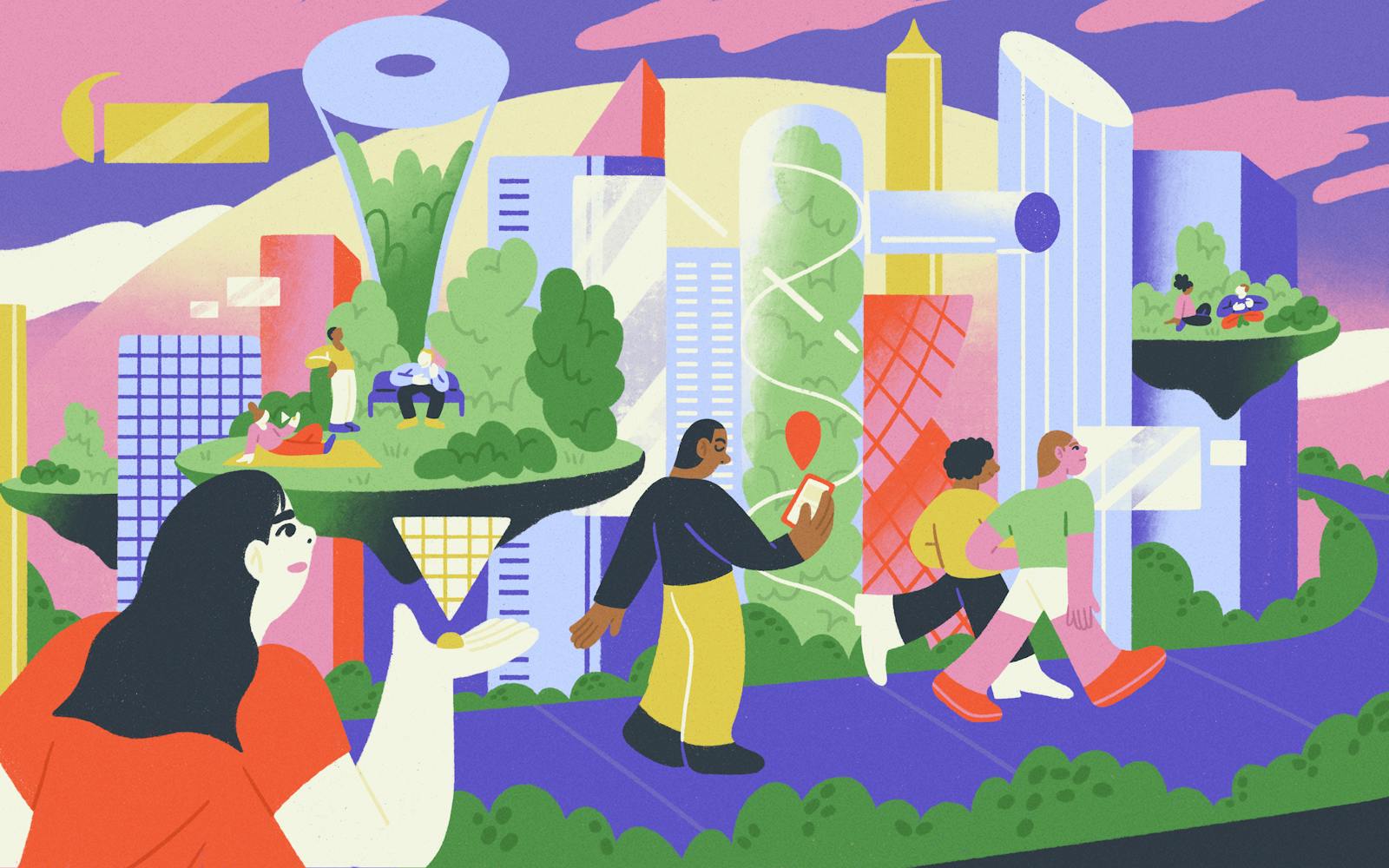At the UN Foundation, we believe that staying informed is the first step toward making a difference. That’s why we’re helping to make complex policy issues into content everyone can understand and access. As passionate advocates for intergenerational collaboration, we recognize that today’s decisions will shape the future young people and future generations will inherit.
Picture a future where world leaders make the right choices — where cooperation leads to real change, from tackling the climate crisis to reducing inequality and creating lasting peace. A future where young people are at the center of decision-making, driving progress in education, jobs, climate solutions, and other areas, especially in regions like Asia and Africa where over half the population is under 30.
At the 2024 Summit of the Future, world leaders came together in common cause and adopted several new agreements with transformational potential. Taken together, the Pact for the Future, its annexes, and the Political Declaration on Antimicrobial Resistance represent an opportunity to rekindle hope and optimism for our common future, allowing us to imagine what our world could look like if we get it right.
Building on the success of Our Common Agenda Decoded, which became a go-to guide for understanding the UN’s OCA policy briefs, we’re back with Pact Decoded. This new resource is designed to make these landmark global agreements easy to understand. It also goes further, unpacking how the agreements will help tackle today’s most pressing challenges and secure a brighter future for generations to come.
As young changemaker Ishaan Shah noted, “Decoded has been a game-changing tool for so many of us — from young people to civil society and even decision-makers. By demystifying the jargon-heavy, awkwardly phrased, and long-winded reports and policies, it’s made the UN’s work more understandable, accessible, and relatable.”

At “Power in Her Voice”, panelists express their vision of a future where world leaders get it right – a gender-equal future. Photo: Carbon Stories/UN Foundation
Pact for the Future: Decoded
At the United Nations Foundation’s Our Future Agenda program, we believe that young people must be fully informed and engaged in global decisions that affect their lives and future. Pact Decoded provides interactive, easy-to-understand summaries of the key agreements made by world leaders at the Summit of the Future. The series also highlights key dates, actions, and milestones to keep in mind. This ensures that everyone, regardless of age, can stay informed and contribute to upcoming global moments to think, plan, and act for the future.
Here’s a snapshot of the key agreements summarized in the Pact Decoded series, including their launch dates:
- Pact for the Future (UN Day, October 24): This groundbreaking plan, crafted by world leaders, aims to address climate change, inequality, and other pressing global issues while inspiring hope for a brighter tomorrow. It outlines 56 bold actions to ensure that no one is left behind and serves as a rallying cry for global cooperation, reminding us that together, we can build a more fair and peaceful world for generations to come.
- Declaration on Future Generations (World Science Day for Peace and Development, November 10): This bold vision aims to protect the rights of future generations and take urgent action against both current and upcoming challenges facing people and the planet. It’s a reminder that our choices today shape the world of tomorrow. Think of it as passing the baton in a relay race — we must ensure that the next generation inherits a safe, just, and opportunity-filled world.
- Global Digital Compact (Engine Room Spotlight, October 30): This agreement seeks to connect everyone to the digital world, ensuring that no one is excluded from the tech revolution. It also addresses the challenges posed by technology, such as privacy concerns and the ethical use of artificial intelligence. Imagine it as building bridges across the internet, enabling people from every corner of the globe to join the online community and harness the benefits of technology.
- Political Declaration on Antimicrobial Resistance (Universal Health Coverage Day, December 12): This declaration calls for immediate action against a critical health threat that could turn even simple infections into life-threatening conditions. It advocates for a united approach to combat AMR by emphasizing prevention, improved health practices, and responsible use of medicines. Picture a world where antibiotics fail; this declaration is our commitment to making sure that doesn’t happen.
With Pact Decoded, we want to make it easier to understand the global agreements shaping our world. Dive into each installment to reimagine how the UN thinks, plans, and acts for the future. Together, we can turn these commitments into action that benefits all generations.
As Inés Yábar, UNF Next Generation Fellow, shared: “The UN was created for ‘the people’ so it’s vital that agreements, actions and articles are understood by us. Decoded is a way of breaking down bureaucracy and bringing clarity where it’s most needed. Once we understand, it will be easier for us to advocate, amplify, and act for our common future.”

The Summit of the Future showcased the vital role of youth voices in the multilateral system.
Photo: UN Foundation
Frequently Asked Questions ABout The Pact for the Future
As we demystify the Pact for the Future, it’s important to understand how the pact came to fruition: when, where, and how world leaders adopted the agreement, and what comes next. We’re answering these key questions and more, which young people around the world are rightfully asking.
1. What is Our Common Agenda?
Our Common Agenda is a report presented by the UN Secretary-General, responding to Member States’ calls for stronger global cooperation during the UN’s 75th anniversary. It outlines a new vision for multilateralism, guiding efforts toward a more equitable, just, and sustainable world, further detailed in 12 policy briefs that propose key strategies for achieving these goals. The report aims to revitalize trust and address the needs of all people, regardless of their location, with innovative solutions for current and future challenges, serving as a roadmap for a brighter tomorrow.
In response to the Secretary-General’s call for youth input on the report, the UN Foundation’s Our Future Agenda program was established. The Next Generation Fellows, a group of changemakers under 30, engaged with over 600 young people globally and consulted with UN leaders to refine the ideas in Our Common Agenda. Their standalone report, Our Future Agenda, presents an ambitious vision and plan for young people and future generations, acting as a manifesto for the ongoing work of the program.
2. What is the Summit of the Future?
The Summit of the Future, held in September 2024, was a crucial gathering where world leaders discussed and adopted the Pact for the Future, a plan proposed under the UN’s Our Common Agenda. This was an opportunity for leaders to unite in tackling climate change, inequality, and other urgent global challenges. It emphasized the need for cooperative efforts, showcasing the vital role of young people’s voices in shaping the discussions and decisions. The Summit underscored the message that we must act now to create a sustainable future for everyone.
3. How were the Pact for the Future and its annexes agreed upon by world leaders?
The Pact for the Future and its annexes were developed through an intergovernmental negotiation process that involved engaging discussions among Member States. Namibia and Germany took the lead as co-facilitators for the pact, while the Netherlands and Jamaica led the negotiations for the Declaration on Future Generations, and Sweden and Zambia did the same for the Global Digital Compact.
Throughout the process, multiple drafts were created and refined, incorporating feedback from various stakeholders, including civil society and young people. Notably, the 2024 United Nations Civil Society Conference played a crucial role by convening diverse voices to inform and shape the intergovernmental negotiation process. This collaborative approach enriched the discussions and ensured that the final agreement reflects a comprehensive commitment to addressing global challenges.
4. What happens next?
Post-Summit of the Future, focus shifts to putting the commitments made into action through the Pact for the Future. World leaders are expected to take these agreements and turn them into tangible strategies that make a real difference in people’s lives. Key milestones through 2025 to secure action and assess progress in executing the commitments include Beijing+30, the International Conference on Financing for Development Conference (FFD), and the World Summit on Social Development. The UN will continue to play a critical role through these moments, fostering international cooperation to achieve the goals outlined in the Pact for the Future. This ongoing effort aims to create a lasting impact, paving the way for a more equitable, sustainable, and peaceful world for current and future generations.
5. Why is the pact important for young people and young countries?
The Pact for the Future directly addresses the unique challenges and opportunities of young people and young countries in a rapidly changing world. In many young countries, where 50–80% of the population is under 30, the need for sustainable development, education, and health care is urgent. By 2100, 7 of the 10 largest countries will be among today’s young nations, with Africa projected to have the highest number of young people.
This demographic shift presents a golden opportunity for these countries to harness their youthful energy to drive innovation and economic growth. It also requires strategic investments to ensure that young people are not left behind. The Pact for the Future and its annexes empower young people to participate actively in shaping policies that will influence their futures, ensuring they can thrive and contribute to global progress.

Following the Summit of the Future, commitments must be turned into action. The decisions leaders make will shape the future young people and future generations will inherit.
Photo: UN Foundation
How Can I Get Involved?
Staying involved is easier than ever with Our Future Agenda. You can follow the program for updates and insights by subscribing to the Our Future Agenda Quarterly, which provides engaging policy insights and highlights the contributions of young people to global discussions.
If you’re a young innovator, consider joining the Engine Room for the Future, a vibrant platform led by young changemakers that empowers you to reimagine how the United Nations operates. This is your chance to actively participate in shaping policies and engage in meaningful dialogue with leaders from around the world. By joining these initiatives you can contribute to building a future that reflects the needs and aspirations of the next generation.
Get Informed, Stay Engaged
Join the Engine Room for the Future to stay engaged for key milestones and contribute to the conversations that will shape the future.







